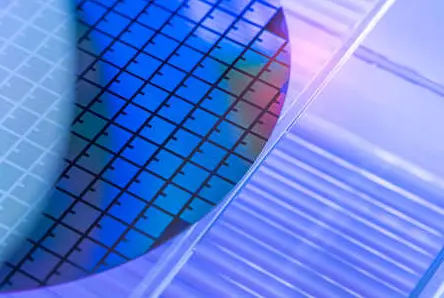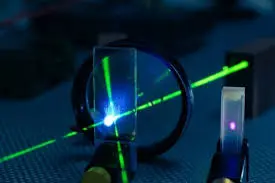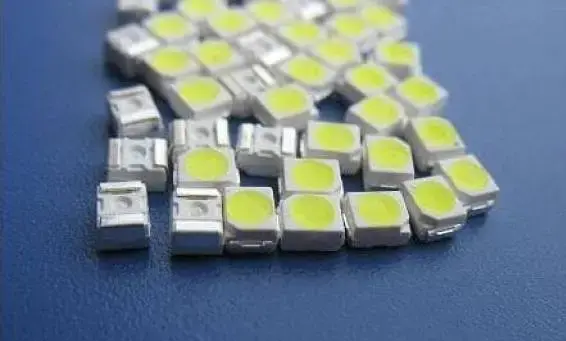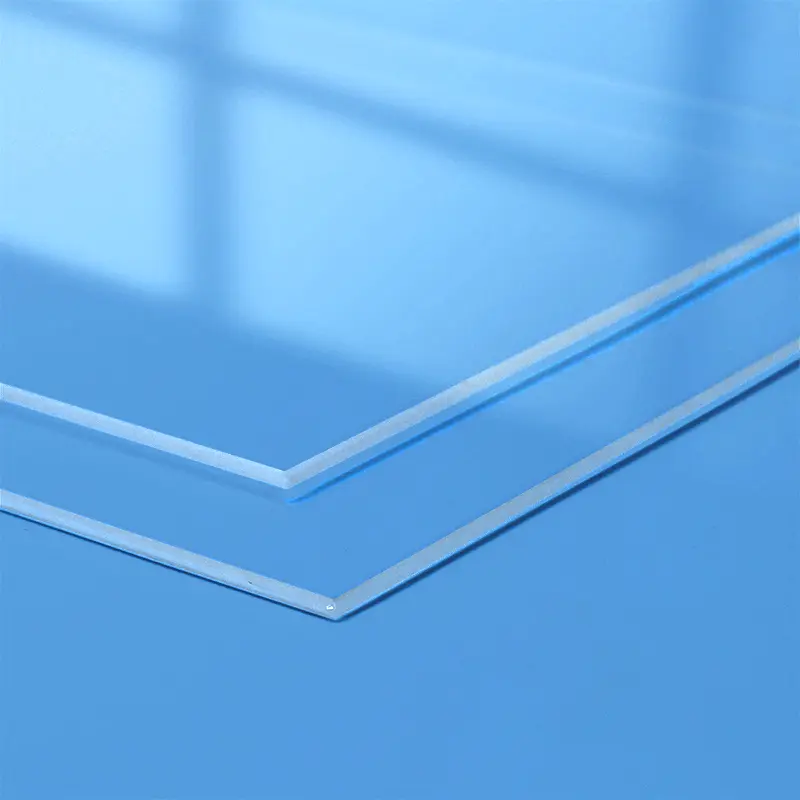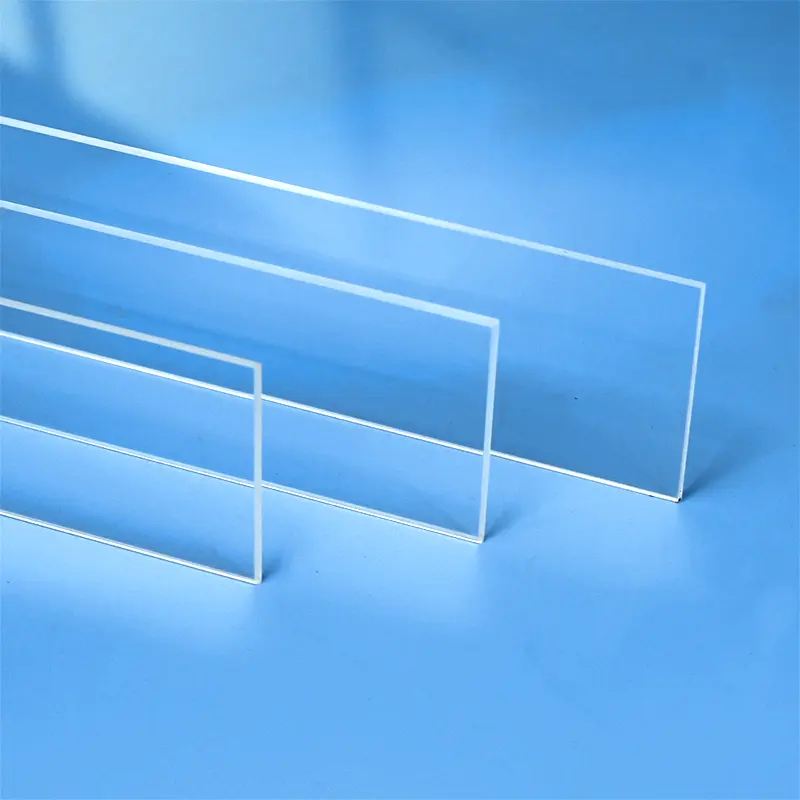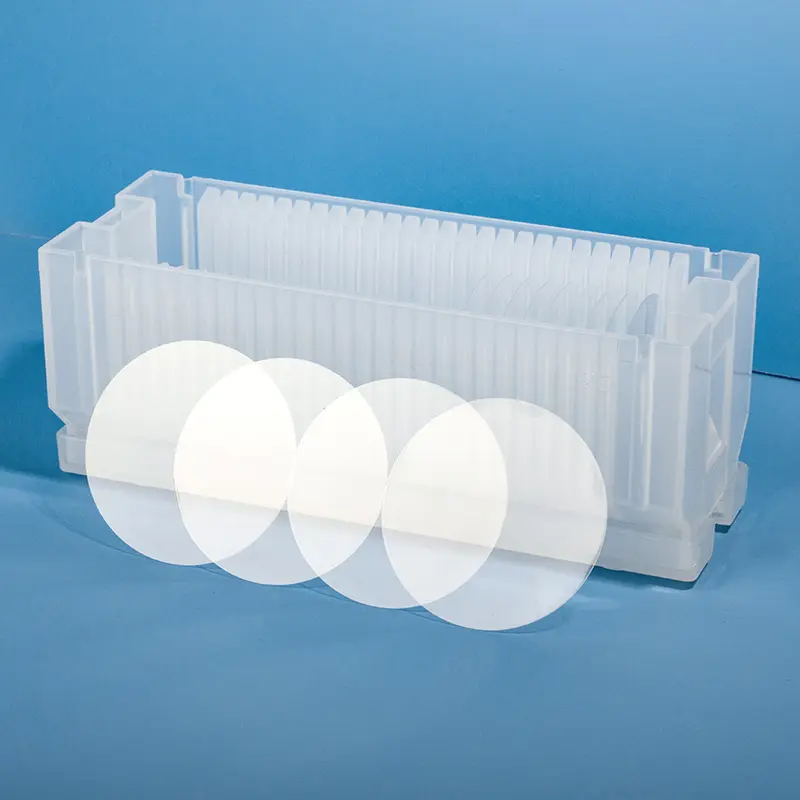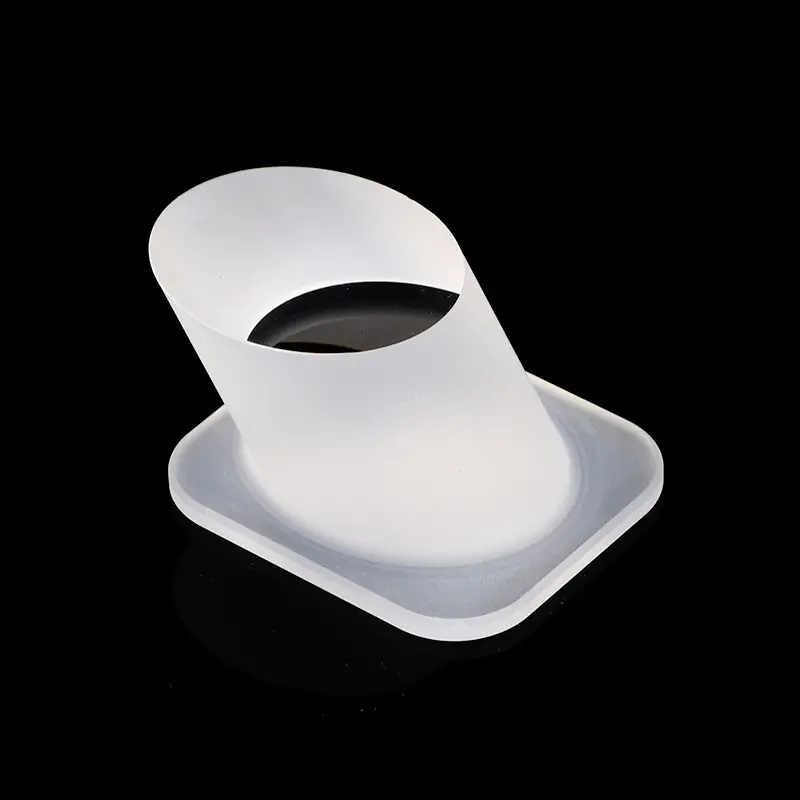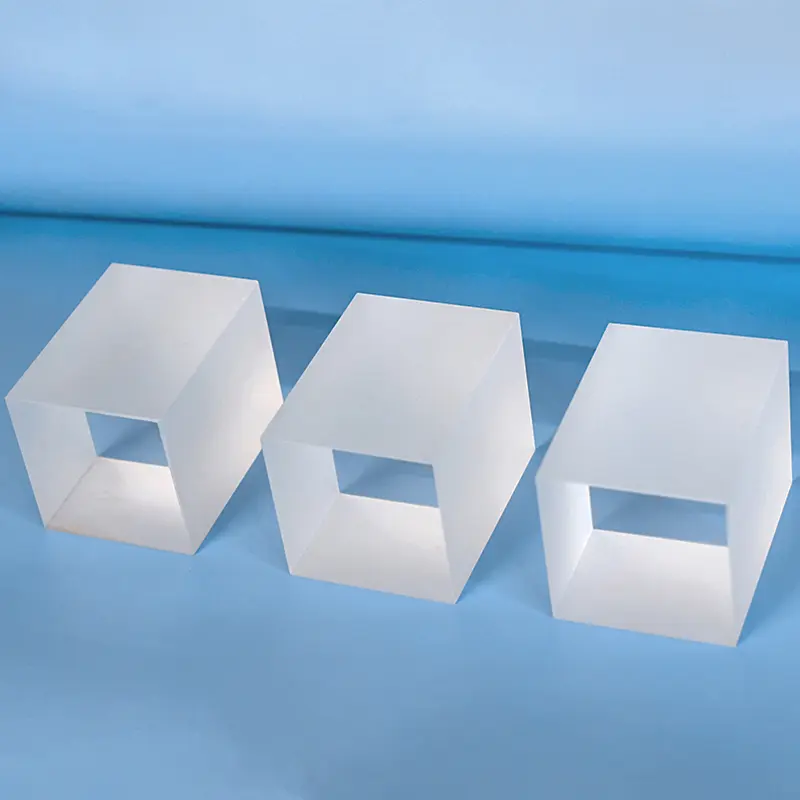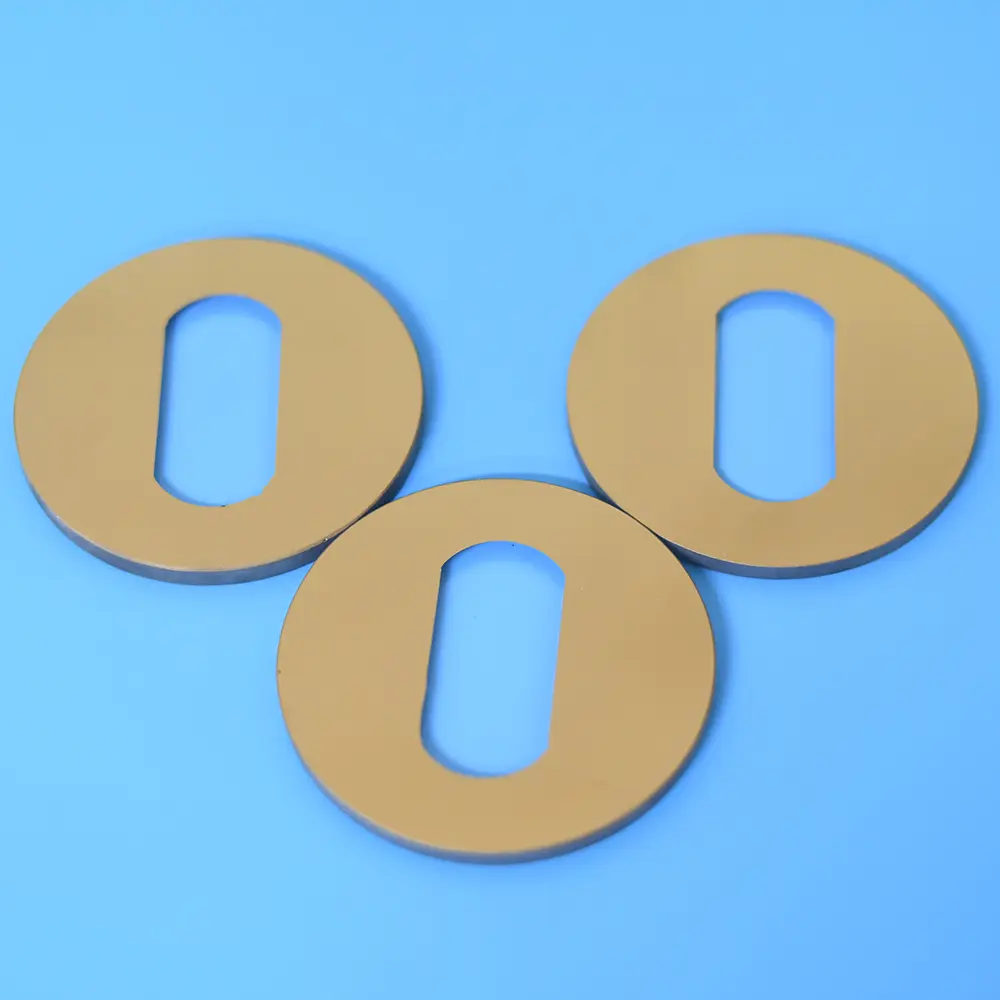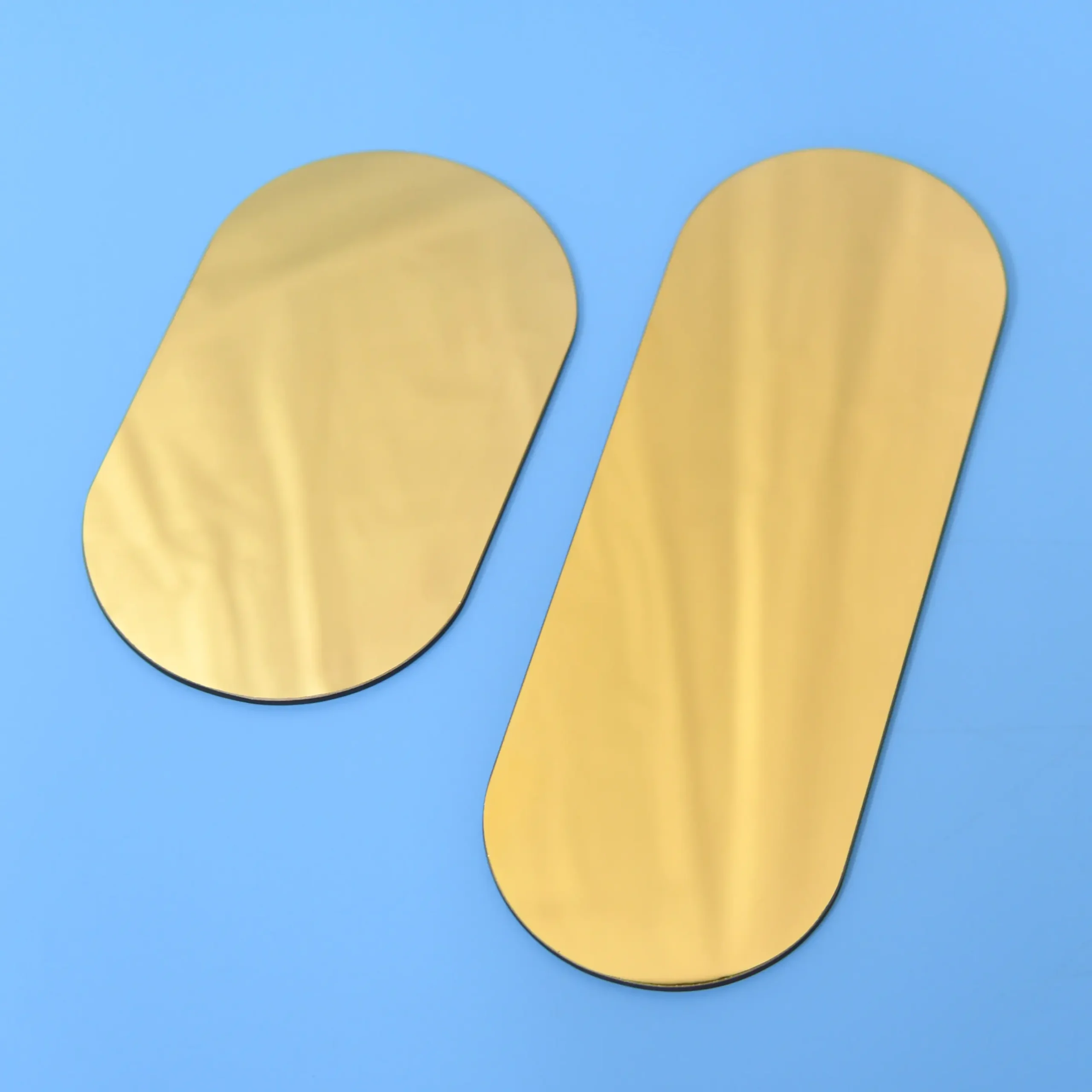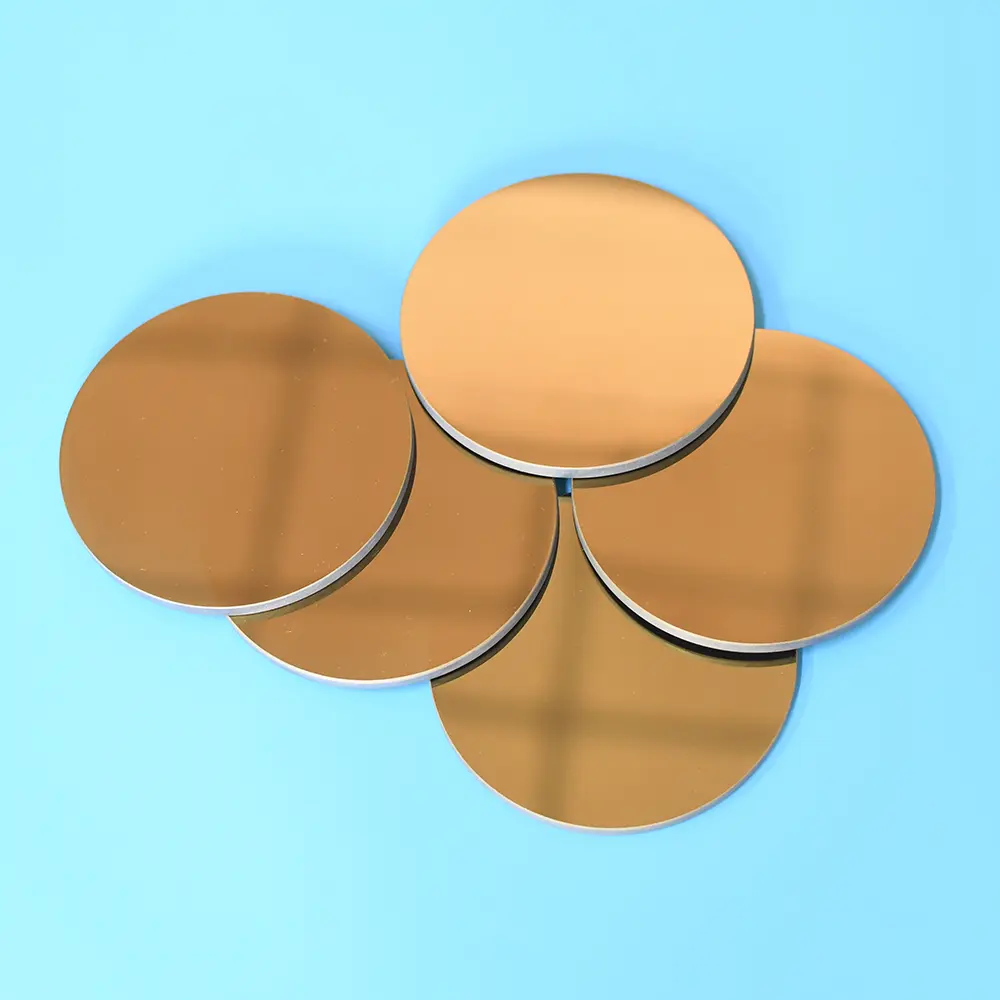Unsere Quarzglasscheiben werden präzise aus hochreinem Quarzglas gefertigt. Wir bieten kundenspezifische Quarzglasscheiben und -fenster für optische, Halbleiter- und Laseranwendungen. Hervorragende UV-Transmission, thermische Stabilität und chemische Beständigkeit.
| Eigenschaftsinhalt | Eigenschaftswerte |
|---|---|
| SiO2 | 99.99% |
| Dichte | 2,2×10³ kg/cm³ |
| Härte | Mohs-Härte 5,5 - 6,5; Knoop-Härte 570 (bei 100 g Prüflast) |
| Zugfestigkeit | 4,8 × 10⁷ Pa (48 N/mm² bzw. 48 MPa); 7.000 psi |
| Druckfestigkeit | >1.1×10⁹ Pa (160,000 psi) |
| Wärmeausdehnungskoeffizient | 5.5×10⁻⁷ cm/cm·°C (20°C-320°C) |
| Wärmeleitfähigkeit | 1,4 W/m-°C |
| Spezifische Wärme | 670 J/kg-°C |
| Erweichungspunkt | 1730°C (3146°F) |
| Transformationspunkt | 1210°C (2210°F) |
| Spannungspunkt | 1120°C (2048°F) |
| Arbeitstemperatur | 1200°C (2192°F) |
| Elektrischer Widerstand | 7×10⁷ Ohm cm (350°C) |
| Größe | Kundenspezifisch |
| Logo | Personalisierung mit Logo |
Hohe Reinheit und Transparenz
Quarzscheiben werden aus hochreinem Siliziumdioxid hergestellt und weisen eine außergewöhnliche Transparenz auf, insbesondere im ultravioletten bis infraroten Spektralbereich. Dies macht sie ideal für optische Anwendungen.
Hohe Temperaturbeständigkeit
Quarzscheiben können extrem hohen Temperaturen standhalten, mit einem Erweichungspunkt von etwa 1730 °C. Sie können kontinuierlich bei 1100 °C eingesetzt werden und kurzzeitig Temperaturen von bis zu 1450 °C tolerieren. Dies macht sie für Hochtemperaturumgebungen geeignet.
Chemische Stabilität
Quarzscheiben weisen eine ausgezeichnete Beständigkeit gegenüber den meisten Chemikalien auf, mit Ausnahme von Flusssäure, was sie für den Einsatz in chemischen Laboren und Industrieanwendungen sehr stabil macht.
Niedriger thermischer Ausdehnungskoeffizient
Quarzscheiben besitzen einen sehr geringen Wärmeausdehnungskoeffizienten, was bedeutet, dass sich ihre Abmessungen bei Temperaturschwankungen kaum ändern. Dies ist essenziell für Anwendungen, die eine präzise Dimensionskontrolle erfordern, wie in Präzisionsinstrumenten und Hochtemperaturanlagen.
Anwendungsszenario
Halbleiterindustrie
Quarzscheiben spielen eine wichtige Rolle in der Halbleiterfertigung, indem sie als Träger und Bearbeitungssubstrate für Wafer dienen. Sie werden in kritischen Prozessschritten wie Photolithographie, Oxidation, Diffusion und chemischer Gasphasenabscheidung eingesetzt, die extrem hohe Anforderungen an Reinheit, Temperaturbeständigkeit und Dimensionspräzision stellen.
In der Halbleiterfertigung dienen Quarzscheiben primär als Träger und Substrate für Siliziumwafer während der Bearbeitung. Sie werden als Basismaterialien in entscheidenden Prozessschritten wie Photolithographie, Oxidation, Diffusion und chemischer Gasphasenabscheidung (CVD) eingesetzt. Ihre hohe Temperaturbeständigkeit, chemische Inertheit und präzise Dimensionskontrolle sind wesentlich, um die Leistungsfähigkeit von Halbleiterbauelementen zu gewährleisten.
Die optischen Eigenschaften von Quarzscheiben sind entscheidend, da ihre Anwendungen in der Optoelektronikindustrie eine hohe Transparenz und eine breite spektrale Transmission erfordern. Diese Merkmale machen Quarzscheiben zu idealen Materialien für die Herstellung von optischen Linsen, Prismen, Fenstern und anderen optischen Komponenten. Sie eignen sich auch hervorragend für den Einsatz in Laserausrüstung und optischen Kommunikationssystemen
In der LED-Fertigung dienen Quarzscheiben primär als hochtemperatur- und chemikalienbeständige Trägermaterialien. Sie bieten den LED-Chips während des Herstellungsprozesses, insbesondere in Hochtemperatur- und korrosiven Umgebungen, stabile physikalische Unterstützung und Schutz, wodurch die Stabilität des Produktionsprozesses und die Qualität der Endprodukte gewährleistet wird.
Häufig gestellte Fragen
Wir sind auf die durchgängige Fertigung von hochreinen Quarzglaskomponenten spezialisiert. Unsere Kernproduktlinien umfassen:
Quarzrohre & -stäbe: Eine große Auswahl an Durchmessern und Spezifikationen.
Quarzplatten & -scheiben: Präzisionsgeschnitten und poliert für optische und industrielle Anwendungen.
Quarzlaborglas: Ein komplettes Sortiment an Standard- und kundenspezifischen Glasgeräten, einschließlich Bechergläsern, Kolben und Booten.
Halbleiterquarz: Hochreine Komponenten wie Prozessrohre und Träger für die Halbleiterfertigung.
Kundenspezifische Fertigungskomponenten: Wir können komplexe Teile nach Ihren einzigartigen Designs und Spezifikationen fertigen.
Ja. Kundenspezifische Fertigung ist das Herzstück unseres Geschäfts. Mit über einem Jahrzehnt spezialisierter Erfahrung arbeiten wir eng mit Unternehmen zusammen, um erstklassige OEM/ODM-Dienstleistungen anzubieten. Unsere Kompetenzen umfassen Schweißen, Schleifen, Bohren, Polieren, Biegen und weitere Präzisionsbearbeitungstechniken, um Komponenten zu fertigen, die exakt Ihren Anforderungen entsprechen.
Qualität ist in unserem Herstellungsprozess von größter Bedeutung. Wir sind ein ISO 9001:2015 zertifizierter Hersteller, der sicherstellt, dass unsere Prozesse internationale Qualitätsmanagementstandards erfüllen.Unsere Produkte durchlaufen zudem rigorose SGS-Prüfungen hinsichtlich Reinheit und Leistung. Wir verwenden hochreine Rohmaterialien (bis zu 99,998% SiO2), um Quarzglas- und Kieselglasprodukte mit außergewöhnlicher thermischer Stabilität, hoher Temperaturbeständigkeit und chemischer Inertheit herzustellen.
Wir haben unsere Prozesse maximal effizient gestaltet:
Senden Sie Ihre Angebotsanfrage (RFQ): Senden Sie uns Ihre technischen Zeichnungen, Spezifikationen und Anforderungen über unser Kontaktformular auf der Website oder per E-Mail.
Schnelle Reaktion: Sie können eine erste Antwort innerhalb weniger Minuten und eine detaillierte Kommunikation innerhalb einer halben Stunde erwarten.
Design & Angebot: Wir liefern Ihnen innerhalb von 24 Stunden einen detaillierten Designvorschlag und ein wettbewerbsfähiges Angebot.
Prototypenentwicklung & Produktion: Nach Freigabe gehen wir zügig von der Prototypenfertigung zur Serienproduktion über, um Ihre Fristen einzuhalten.
Eine Partnerschaft mit Aoxin Quartz bietet mehrere entscheidende Vorteile:
Nachgewiesene Expertise: Mit über 10 Jahren Branchenerfahrung verfügen wir über das technische Fachwissen, um komplexe Herausforderungen zu meistern.
One-Stop Solution: We manage the entire production process, from sourcing high-purity raw materials to fabricating and finishing complex components.
Wettbewerbsfähiger Wert: Als Standort in einem wichtigen Quarzproduktionszentrum nutzen wir eine effiziente Lieferkette und fortschrittliche Fertigung, um außergewöhnliche Qualität zu einem wettbewerbsfähigen Preis anzubieten.
Dedicated Partnership: Over 90% of our clients become long-term partners. We are committed to your success through responsive service, reliable quality, and innovative solutions.


